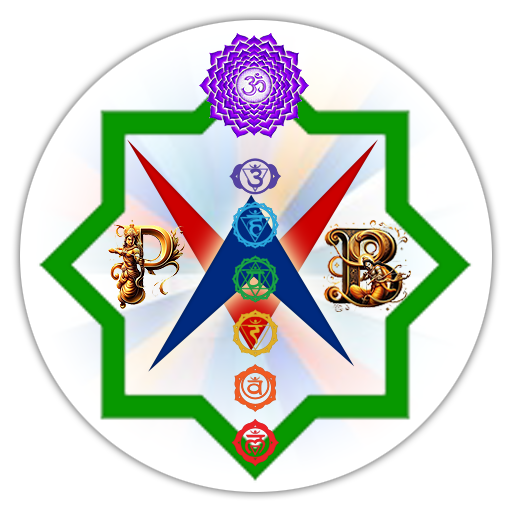శ్రీ మదగ్ని మహాపురాణము - 240 / Agni Maha Purana - 240
- Prasad Bharadwaj
- Jul 4, 2023
- 2 min read

🌹. శ్రీ మదగ్ని మహాపురాణము - 240 / Agni Maha Purana - 240 🌹
✍️. పుల్లెల శ్రీరామచంద్రుడు, 📚. ప్రసాద్ భరద్వాజ
శ్రీ గణేశాయ నమః ఓం నమో భగవతే వాసుదేవాయ.
ప్రథమ సంపుటము, అధ్యాయము - 72
🌻. స్నానతర్పణాది విధి కధనము - 5 🌻
పిమ్మట అఘమర్షణము చేయవలెను. కుడిచేతిలో బోధరూప శివమయ మగు ఉదకము పోసికొని, ముక్కు దగ్గరకు తీసికొనిపోయి, (వామ) ఇడానాడి ద్వారా శ్వాస పీల్చి లోపల నిలిపి, లోపలినుండి నల్లని పాప పురుషుని (దక్షిణ) పింగళానాడి ద్వారా బైటకు తీసికొని వచ్చి ఆ జలమునందు స్థాపించవలెను. ఆ పాపపురుషునితో కూడిన జలమును, ఒక వజ్రమయ శిలను భావన చేసి, దానిపై పడవేసి చంపవలెను. దీనితో అఘమర్షణము సంపన్న మగును. పిమ్మట కుశ - పుష్ప - అక్ష తలతో కూడిన జలముతో అర్ఘ్యాంజలి పట్టి దానిని ''ఓం నమః శివాయ స్వాహా'' అను మంత్రముతో శివునకు సమర్పించి యథాశక్తిగ గాయత్రీ మంత్రము జపింపవలెను.
ఇపుడు తర్పణవిధిని చెప్పెదను. దేవతలకు వారి నామ మంత్రముల నుచ్చరించుచు, దేవతీర్థము ద్వారా తర్పణము చేయవలెను. ''ఓం హూం శివాయ స్వాహా'' అని చెప్పి శివునకు తర్పణమీయవలెను. ఇతర దేవతలకు కూడ ఈ విధముగనే వారి వారి పేర్లకు ''స్వాహా'' చేర్చి తర్పణము లీయవలెను. ''ఓం హాం హృదయాయ నమః, ఓం హీం శిరసే స్వాహా; ఓం హూం శిఖాయై వషట్; ఓం హై కవచాయ హుం; ఓం హౌం నేత్రత్రయాయ వౌషట్; ఓం హః అస్త్రాయ ఫట్'' అను వాక్యము లుచ్చరించుచు క్రమముగ హృదయ - శిరః - శిఖా - కవచ - నేత్ర - అస్త్రన్యాసములు చేయవలెను. ఎనిమిది దేవగణములకు వారి పేర్ల చివర నమః అను పదము చేర్చి తర్పణము చేయవలెను. ''ఓం హాం ఆదిత్యేభ్యో నమః; ఓం హాం వసుభ్యో నమః; ఓం హాం రుద్రేభ్యో నమః; ఓం హాం విశ్వేభ్యో దేవేభ్యో నమః; ఓం హాం మరుద్భ్యో నమః; ఓం మాం భృగుభ్యో నమః, ఓం హాం అంగిరోభ్యో నమః'' - ఈ విధముగ చేయవలెను. పిమ్మట యజ్ఞోపవీతమును కంఠమునందు మాల వలె ధరించి (ఉపవతి) ఋషితర్పణము చేయవలెను. ''ఓం హాం అత్రయే నమః; ఓం హాం విశ్వామిత్రాయ నమః; ఓం హాం ప్రచేతసే నమః; ఓం హాం మరీచయే నమః'' అను మంత్రములు పఠించుచు అత్ర్యాది ఋషులకు ఋషితీర్థము ద్వారా తర్పణములు చేయవలెను.
సశేషం....
🌹 🌹 🌹 🌹 🌹
🌹 Agni Maha Purana - 240 🌹
✍️ N. Gangadharan 📚. Prasad Bharadwaj
Chapter 72
🌻 Mode of bathing and daily worship (snāna-viśeṣa) - 5🌻
37. That water should then be ejected into the right palm after having conceived it as black in colour because of the redemption of one’s sins. It should be thrown on a stone slab. This is known to be the aghamarṣaṇa (redeeming from sin) rite.
38. Then one should repeat the gāyatrī mantra as many times as possible after having offered the respectful arghya consisting, of kuśa, flowers and unbroken rice to Śiva with the mantras of Śiva ending with (the syllable) svāhā (oblation).
39. I shall describe the offering of water oblations to the god. One should utter the mantra Śivāya svāhā (oblations to Śiva) and offer water. (The syllable) svāhā should be repeated in all cases.
40. (The nyāsa should be done as) hrāṃ, to the heart; hrīṃ, to the head; hrūṃ, to the tuft of hair; hraiṃ, to the armour and the weapons, (or in the alternative), the eight gods (can be located) in the heart and other limbs).
41-44. (The water oblations should be performed for the following gods)—hrāṃ, to the Vasus, Rudras, Viśve (devas), (to the sages)—hāṃ to Bhṛgus, Aṅgirās, Atri; salutation to Vasiṣṭha, Pulastya, Kratu, Bhāradvāja; salutations to Viśvāmitra, to Pracetas; vaṣaṭ to Sanaka; hāṃ vaṣaṭ to Sananda, vaṣaṭ to Sanātana, vaṣaṭ to Sanatkumāra; vaṣaṭ to Kapila, to Pañcaśikha, (the ceremony being done) with the fingers of the right hand placed at the elbow joint of the left.
Continues....
🌹 🌹 🌹 🌹 🌹




Comments